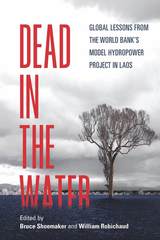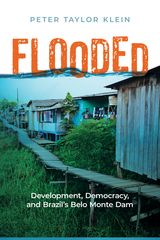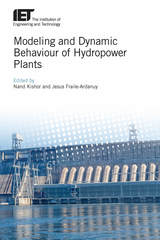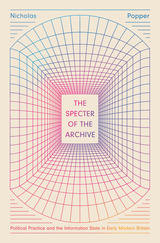6 books about Hydroelectric power plants

Dammed
The Politics of Loss and Survival in Anishinaabe Territory
Brittany Luby
University of Manitoba Press, 2020

Dead in the Water
Global Lessons from the World Bank's Model Hydropower Project in Laos
Edited by Bruce Shoemaker and William Robichaud; foreword by Yos Santasombat; afterword by Philip Hirsch
University of Wisconsin Press, 2019
For decades, large dam projects have been undertaken by both nations and international agencies with the aim of doing good: preventing floods, bringing electricity to rural populations, producing revenues for poor countries, and more. But time after time, the social, economic, and environmental costs have outweighed the benefits of the dams, sometimes to a disastrous degree. In this volume, a diverse group of experts—involved for years with the Nam Theun 2 dam in Laos—issue an urgent call for critical reassessment of the approach to, and rationale for, these kinds of large infrastructure projects in developing countries.
In the 2000s, as the World Bank was reeling from revelations of past hydropower failures, it nonetheless promoted the enormous Nam Theun 2 project. NT2, the Bank believed, offered a new, wiser model of dam development that would alleviate poverty, protect the environment, engage locally affected people in a transparent fashion, and stimulate political transformation. This was a tall order. For the first time, this book shows in detail why, despite assertions of success from the World Bank and other agencies involved in the project, the dam's true story has been one of substantial loss for affected villagers and the regional environment. Nam Theun 2 is an important case study that illustrates much broader problems of global development policy.
In the 2000s, as the World Bank was reeling from revelations of past hydropower failures, it nonetheless promoted the enormous Nam Theun 2 project. NT2, the Bank believed, offered a new, wiser model of dam development that would alleviate poverty, protect the environment, engage locally affected people in a transparent fashion, and stimulate political transformation. This was a tall order. For the first time, this book shows in detail why, despite assertions of success from the World Bank and other agencies involved in the project, the dam's true story has been one of substantial loss for affected villagers and the regional environment. Nam Theun 2 is an important case study that illustrates much broader problems of global development policy.
[more]

Flooded
Development, Democracy, and Brazil’s Belo Monte Dam
Peter Taylor Klein
Rutgers University Press, 2022
In the middle of the twentieth century, governments ignored the negative effects of large-scale infrastructure projects. In recent decades, many democratic countries have continued to use dams to promote growth, but have also introduced accompanying programs to alleviate these harmful consequences of dams for local people, to reduce poverty, and to promote participatory governance. This type of dam building undoubtedly represents a step forward in responsible governing. But have these policies really worked?
Flooded provides insights into the little-known effects of these approaches through a close examination of Brazil’s Belo Monte hydroelectric facility. After three decades of controversy over damming the Xingu River, a tributary of the Amazon, the dam was completed in 2019 under the left-of-center Workers’ Party, becoming the world’s fourth largest. Billions of dollars for social welfare programs accompanied construction. Nonetheless, the dam brought extensive social, political, and environmental upheaval to the region. The population soared, cost of living skyrocketed, violence spiked, pollution increased, and already overextended education and healthcare systems were strained. Nearly 40,000 people were displaced and ecosystems were significantly disrupted. Klein tells the stories of dam-affected communities, including activists, social movements, non-governmental organizations, and public defenders and public prosecutors. He details how these groups, as well as government officials and representatives from private companies, negotiated the upheaval through protests, participating in public forums for deliberation, using legal mechanisms to push for protections for the most vulnerable, and engaging in myriad other civic spaces. Flooded provides a rich ethnographic account of democracy and development in the making. In the midst of today’s climate crisis, this book showcases the challenges and opportunities of meeting increasing demands for energy in equitable ways.
Flooded provides insights into the little-known effects of these approaches through a close examination of Brazil’s Belo Monte hydroelectric facility. After three decades of controversy over damming the Xingu River, a tributary of the Amazon, the dam was completed in 2019 under the left-of-center Workers’ Party, becoming the world’s fourth largest. Billions of dollars for social welfare programs accompanied construction. Nonetheless, the dam brought extensive social, political, and environmental upheaval to the region. The population soared, cost of living skyrocketed, violence spiked, pollution increased, and already overextended education and healthcare systems were strained. Nearly 40,000 people were displaced and ecosystems were significantly disrupted. Klein tells the stories of dam-affected communities, including activists, social movements, non-governmental organizations, and public defenders and public prosecutors. He details how these groups, as well as government officials and representatives from private companies, negotiated the upheaval through protests, participating in public forums for deliberation, using legal mechanisms to push for protections for the most vulnerable, and engaging in myriad other civic spaces. Flooded provides a rich ethnographic account of democracy and development in the making. In the midst of today’s climate crisis, this book showcases the challenges and opportunities of meeting increasing demands for energy in equitable ways.
[more]

Modeling and Dynamic Behaviour of Hydropower Plants
Nand Kishor
The Institution of Engineering and Technology, 2017
Hydropower is a mature and cost-competitive renewable energy source, contributing the bulk of global renewable electricity. Over the past decades, computer technology has led to significant possible improvements in monitoring, diagnostics, protection and control through retrofitting of large plants, and there is potential for additional large plants as well as for smaller installations.
[more]

Origins of the TVA
The Muscle Shoals Controversy, 1920-1932
Preston J. Hubbard
University of Alabama Press, 2005
"Professor Hubbard's painstaking study, Origins of the TVA, shows the thorny course of events before TVA was born....Students of legislation and party politics will be grateful to Professor Hubbard for his careful and useful narrative of the long conflict over policy. His work is well done. He has examined the public records and some of the private papers....Professor Hubbard's volume is a credit to its author and to the press which published it." --J. B. Shannon, The University of Nebraska, in Political Science Quarterly
[more]

Rivers at Risk
Concerned Citizen's Guide To Hydropower
John D. Echeverria, Pope Barrow, and Richard Roos-Collins; American Rivers
Island Press, 1989
Rivers at Risk is an invaluable handbook that offers a practical understanding of how to influence government decisions about hydropower development on America's rivers.
[more]
READERS
Browse our collection.
PUBLISHERS
See BiblioVault's publisher services.
STUDENT SERVICES
Files for college accessibility offices.
UChicago Accessibility Resources
home | accessibility | search | about | contact us
BiblioVault ® 2001 - 2024
The University of Chicago Press









